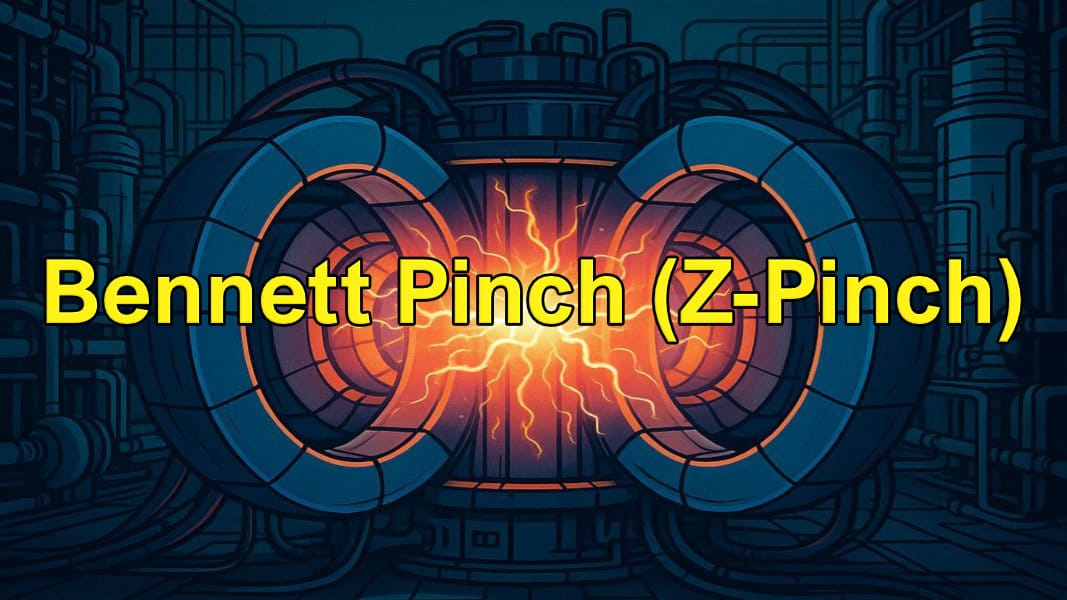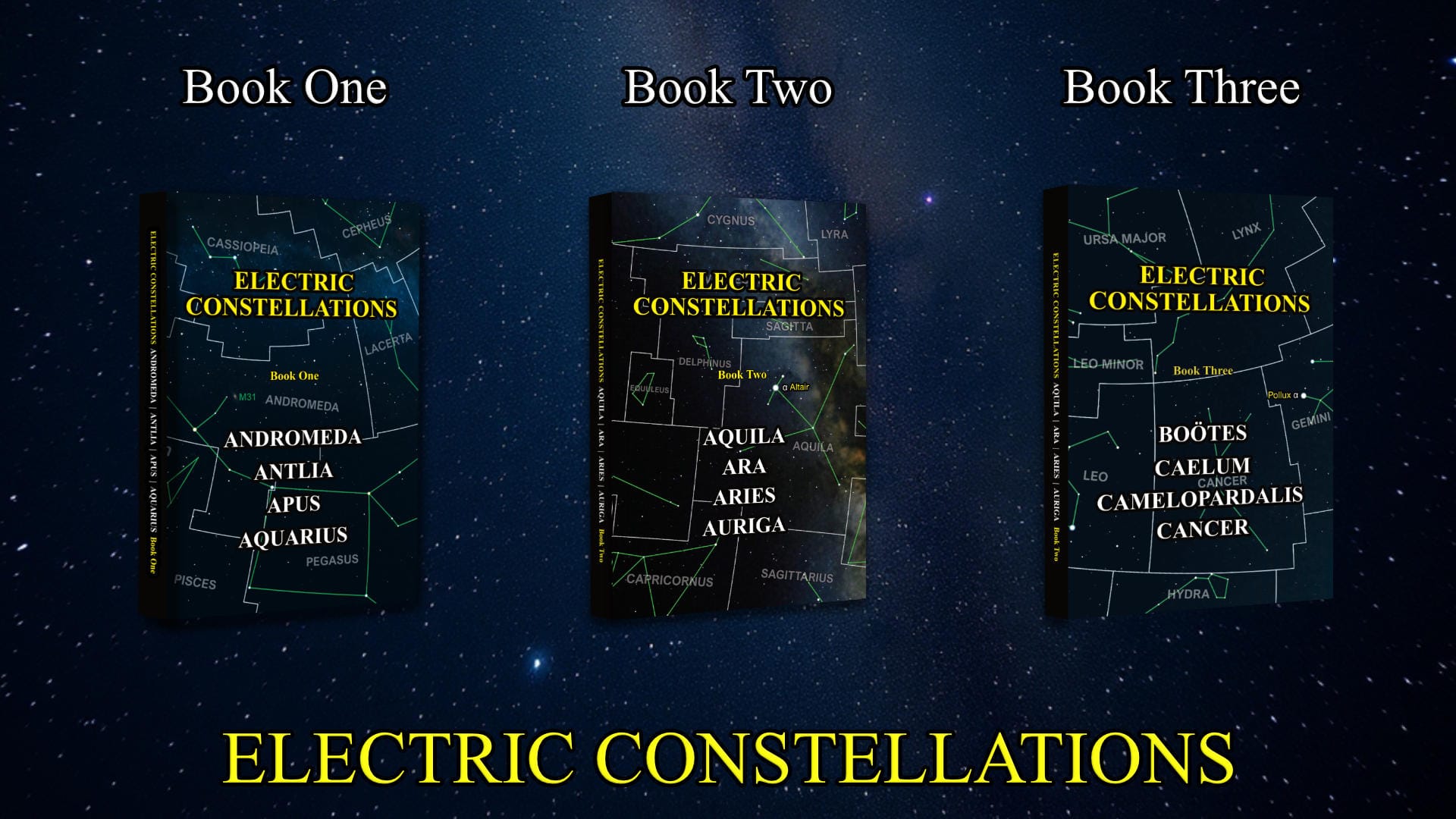Z-Pinch Technology Video

The Bennett pinch, often referred to as the Z-pinch, is a plasma confinement mechanism in which a current-carrying plasma filament is radially compressed by the magnetic field it generates. The effect arises from the balance between the inwardly directed magnetic pressure and the outward thermal pressure of the plasma. This equilibrium condition is described quantitatively by Bennett’s relation, which expresses the equality between the magnetic self-confinement of the current and the kinetic pressure of the plasma particles.
Imagine harnessing the power of a star in a device that could fit inside your garage. This is the promise of Z-pinch technology. Unlike the massive, complex tokamaks that dominate fusion research headlines, Z-pinch devices apply a surprisingly elegant approach to creating fusion conditions. By running powerful electric currents through plasma—a superheated, electrically charged gas—these devices generate magnetic fields that compress the plasma inward from all sides, creating the extreme temperatures and pressures needed for atomic nuclei to overcome their natural repulsion and fuse together.
Named after the direction of the current flow along the Z-axis of cylindrical coordinates, Z-pinch technology isn't new, but recent breakthroughs have breathed fresh life into this approach. Private companies like Zap Energy, working in collaboration with research institutions such as Lawrence Livermore National Laboratory, have made substantial progress in overcoming the plasma instabilities that historically plagued Z-pinch devices. These advances have positioned Bennett Z-pinch technology as a serious contender in the race to develop practical fusion energy—potentially offering a faster, more direct path to commercial fusion power than its larger, more expensive counterparts.
The fundamental principle behind Z-pinch fusion is deceptively simple: when an electric current flows through a plasma column, it generates a magnetic field that squeezes the plasma inward, compressing and heating it to fusion conditions. This compression mechanism was first described mathematically by Willard Harrison Bennett in 1934, giving rise to the term "Bennett Z-pinch." The process mimics in a controlled environment what happens naturally in lightning strikes and solar flares—powerful electromagnetic forces creating extreme conditions where atomic nuclei can overcome their mutual repulsion.
Modern Z-pinch devices typically feature a cylindrical chamber where deuterium gas (an isotope of hydrogen) is injected and ionized into plasma. Massive capacitor banks discharge millions of amperes of current through this plasma in microsecond pulses. The resulting magnetic pinch effect rapidly compresses the plasma to temperatures exceeding 100 million degrees Celsius and densities high enough for fusion reactions to occur. What makes today's Z-pinch approaches different from earlier attempts is the introduction of stabilizing mechanisms—particularly sheared plasma flows—that prevent the plasma from breaking apart before fusion can happen.
The most significant technical breakthrough enabling modern Z-pinch progress is the development of flow stabilization techniques. By introducing a sheared flow velocity profile within the plasma—where different layers of plasma move at different speeds—researchers have found a remarkably effective method for suppressing the instabilities that historically plagued Z-pinch devices.
This approach, pioneered at the University of Washington and commercialized by Zap Energy, represents a fundamental advance that addresses the core challenge that shifted research away from Z-pinches decades ago. The sheared flow creates what amounts to a dynamic stabilization effect, preventing small perturbations from growing into disruptive instabilities. This elegant solution potentially unlocks the inherent advantages of Z-pinch geometry without its historical limitations, opening a new chapter in fusion research.
More about Z-Pinch Technology can be found here.
Challenge the standard model—explore the cosmos through the Electric Universe Theory. These Electric Constellations books contain full-color, data-rich investigations of four constellations each. They're not a beginner's star guide—they're a serious work for independent thinkers, astronomers, and scientifically literate readers seeking to understand the Universe beyond conventional gravity-based interpretations.
Each constellation is examined in detail, with attention to its Bayer-designated stars, mythological origins, meteor showers, and bordering constellations. In-depth profiles of deep-sky objects—including galaxies, planetary nebulae, and star clusters—are paired with high-resolution imagery from the Webb and Hubble space telescopes, delivering both scientific clarity and visual impact.
Central to this series is the Electric Universe (EU) model, which proposes that electromagnetic forces—not gravity alone—govern much of the structure and behavior of the cosmos. Rather than treating this as speculative fringe, the book frames the EU model as an evidence-based, plasma-physics-informed alternative to the standard cosmological narrative.
Inside each volume:
- Comprehensive coverage of four distinct constellations
- Analyses of deep-sky objects in the EU context
- Original commentary on plasma discharge features and Z-pinch configurations
- Mythological and historical context without romantic embellishment
Written for readers who demand more than rote repetition of gravitational dogma, Electric Constellations opens a new observational and theoretical frontier—where stars light by electrical currents, not fusion, and where structure emerges from plasma dynamics, not dark matter.
Whether you are an amateur astronomer, electrical engineer, or astrophysicist curious about alternative models, these books deliver a rigorous and visually stunning exploration of the night sky—illuminated by a very different current.
